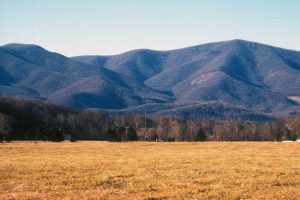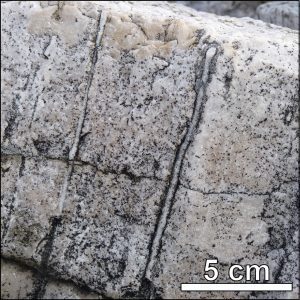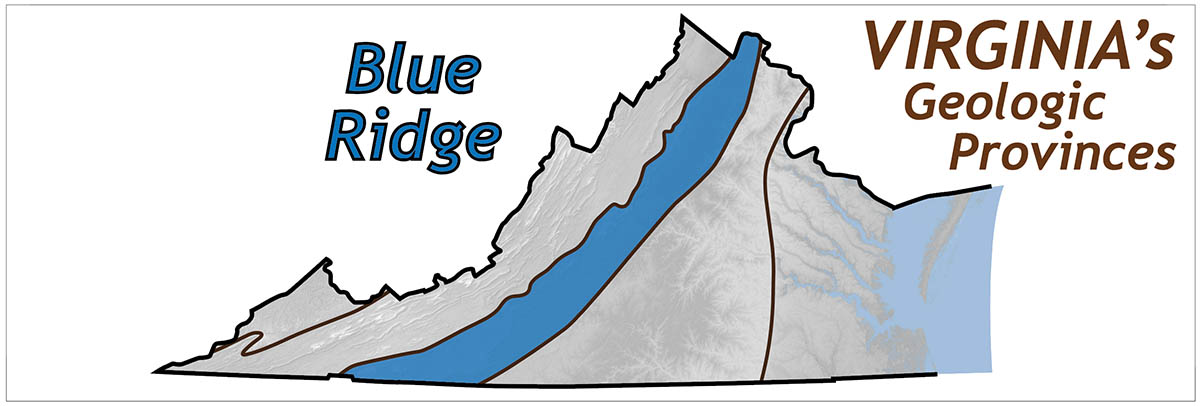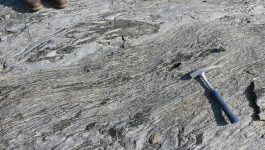
The Blue Ridge Mountains rise steeply in Nelson County. The Priest (high point on the right side of the image) tops out at 1,237 meters (4,056′).
The Blue Ridge geologic province is a distinctive highland region that also exposes Virginia’s oldest rocks. In central and northern Virginia, the Blue Ridge Mountains rise dramatically to elevations above 1,200 m (4000’) with local relief up to 1000 m. In southern Virginia, the Blue Ridge forms a broad plateau-like upland that rises over 500 m from the Piedmont along the prominent Blue Ridge escarpment. In the southwestern Virginia Blue Ridge, Mt. Rogers (1,746 m), forms Virginia’s highest peak.
The Blue Ridge forms a massif with Mesoproterozoic igneous and metamorphic basement rocks at its core and Neoproterozoic to Early Paleozoic cover rock on its flanks. During the Grenvillian (1.2 – 1.0 Ga) orogeny the Blue Ridge experienced the intrusion of a diverse suite of granitic rocks and widespread granulite-facies metamorphism, this magmatic and tectonic activity was associated with continental collision that ultimately produced the supercontinent of Rodinia. Two hundred and fifty million years later Neoproterozoic (750-700 Ma) granites intruded older basement rocks during an early phase of continental rifting that also produced basins into which coarse- to fine-grained sediment accumulated.

Trace fossils (Skolithos linearis) in well-cemented quartz sandstone of the early Antietam Formation Cambrian. These are Virginia’s oldest fossils.
In central and northern Virginia, a vast tract basaltic lavas were between 570 and 550 Ma, today these are the greenstones of the Catoctin Formation which underlie many of the highest peaks in the northern Blue Ridge. By the early Cambrian (~540 Ma), the Iapetus Ocean had opened to the east of the Blue Ridge and a westward transgression occurred along the ancient North American (Laurentian) margin. In the western Blue Ridge, shallow marine siliciclastic rocks of the Chilhowee Group were deposited.
Rocks in the Blue Ridge province are allochthonous, as they were faulted and displaced many kilometers to the northwest over Paleozoic rocks of the Valley & Ridge province.
Although earlier deformation events are recorded in the older basement rocks, the entire Blue Ridge province experienced regional-scale deformation and metamorphism between 380 and 330 Ma creating mylonitic high-strain zones in the basement rocks and a pervasive foliation in the cover rocks. During the late Paleozoic, the Blue Ridge massif was thrust over layered rocks of the Valley & Ridge during the collision between Africa and North America that lead to the formation of Pangea.




